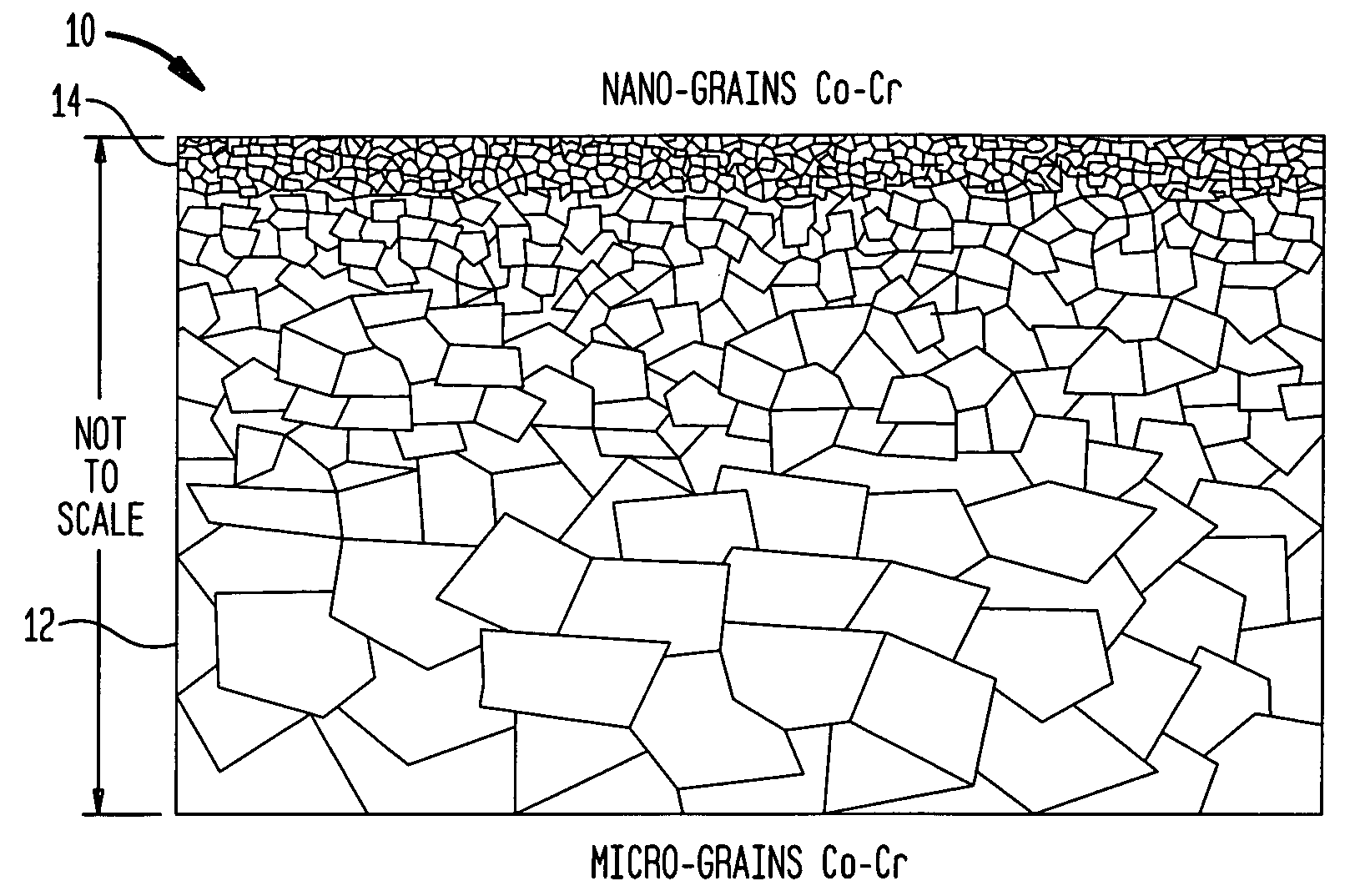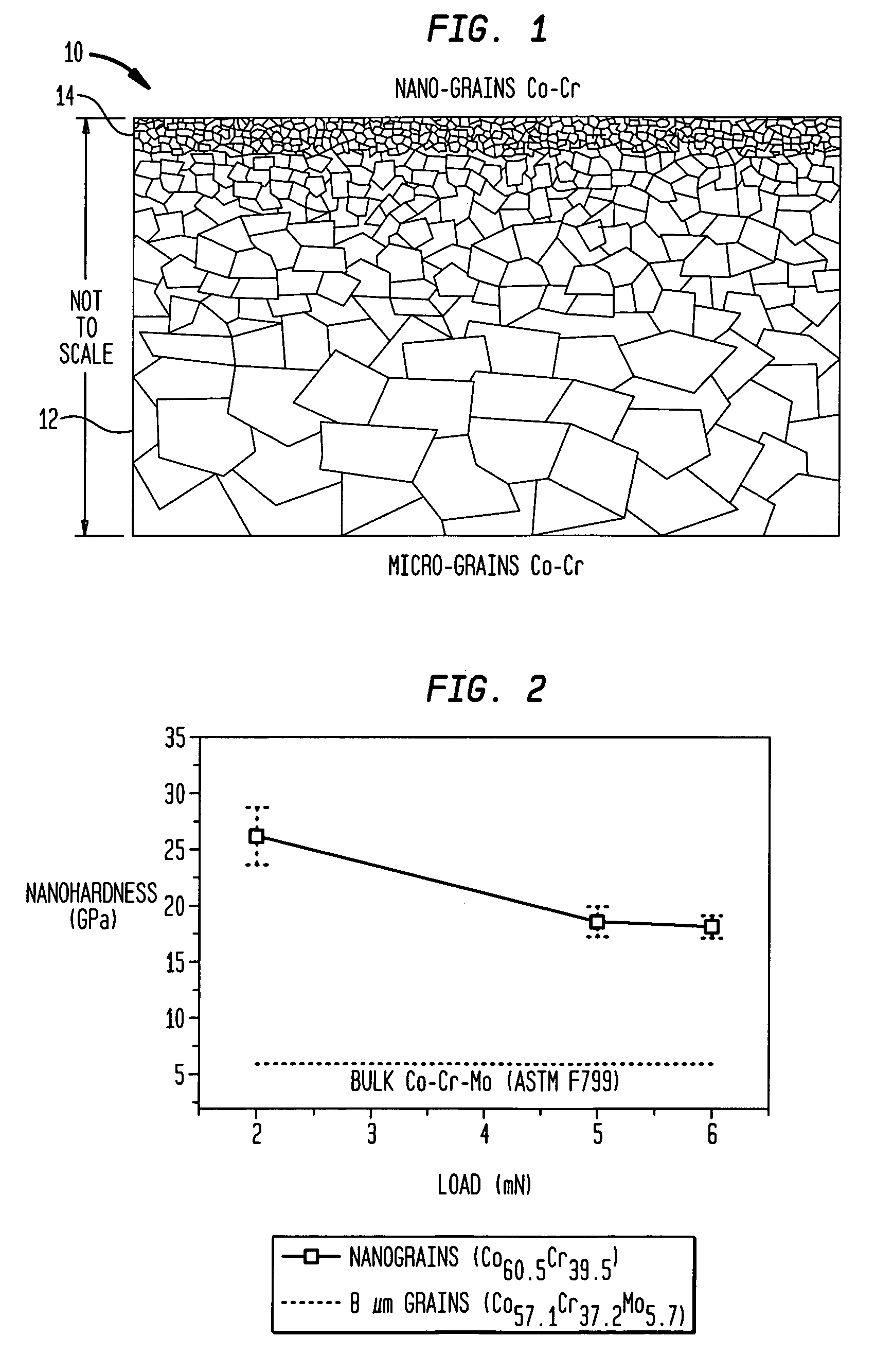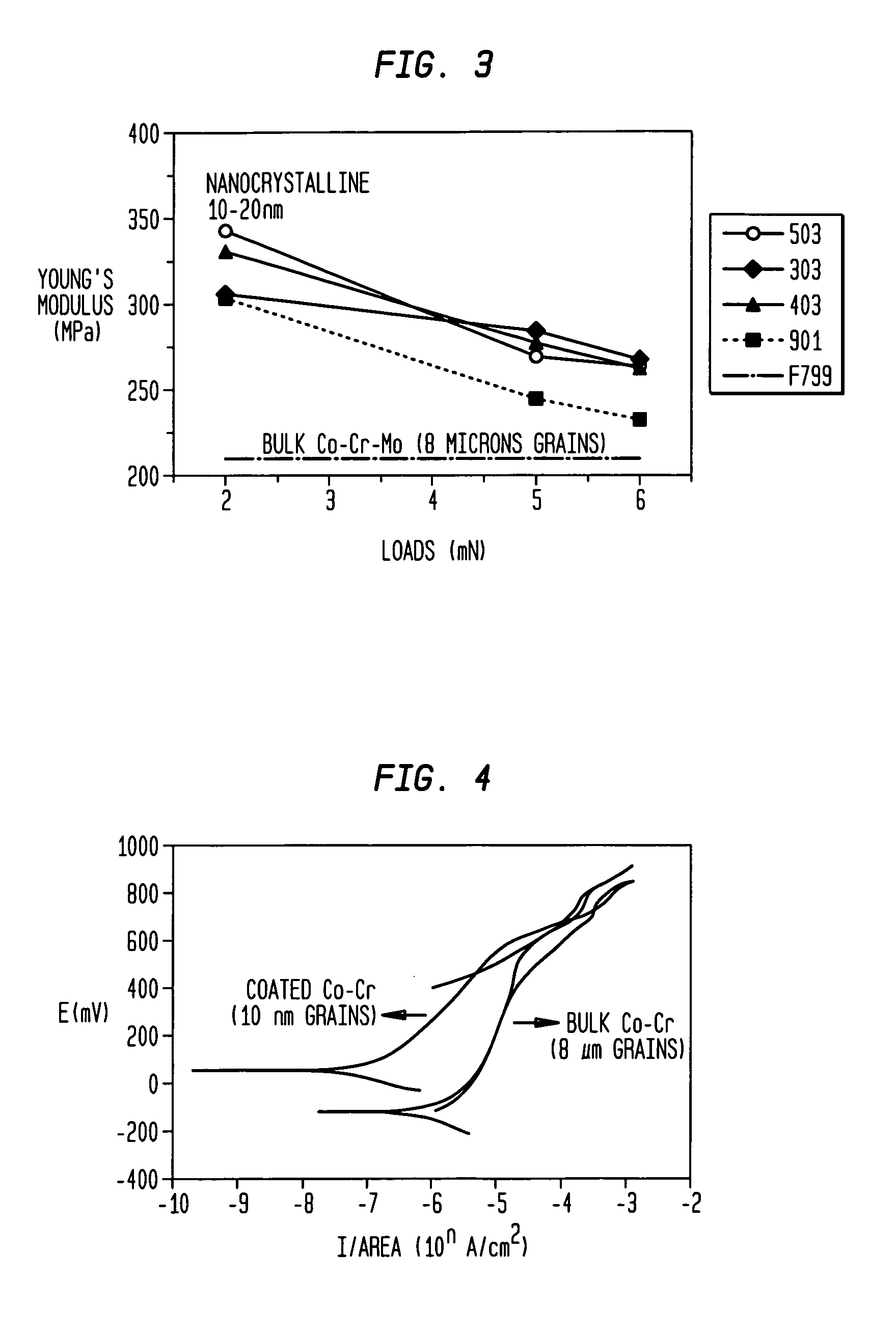Nano-crystalline, homo-metallic, protective coatings
a technology of homo-metallic and nano-crystalline metals, applied in the direction of packaging foodstuffs, shoulder joints, impression caps, etc., can solve the problems of reducing joint mobility and pain, abrasion wear, and limited life of total joint replacement components
- Summary
- Abstract
- Description
- Claims
- Application Information
AI Technical Summary
Benefits of technology
Problems solved by technology
Method used
Image
Examples
example 1
[0054]A plurality of nano-crystalline coatings of Co—Cr was formed on a Co—Cr—Mo substrate (F799 substrate) having an average chemical composition of Co57.12Cr37.2Mo5.7. The chemical composition of the substrate was determined by utilizing Rutherford Backscattering Spectrometry.
[0055]To produce these films, a Co—Cr alloy was evaporated and the evaporated atoms were directed to the surface of the substrate. Concurrently, the substrate was bombarded with a beam of argon ions, having a current density in a range of about 50 to 150 microamperes per square centimeter (μA / cm2) and an ion energy of 500 or 600 eV. The process of simultaneous deposition and ion bombardment of the substrate continued for a selected time period to produce a nano-crystalline film having a desired thickness.
[0056]TEM studies of these Co—Cr coatings show that the grain sizes of the coatings range from about 20 nm to about 40 nm. That is, the coatings include grains having sizes that are a few hundred times smalle...
PUM
| Property | Measurement | Unit |
|---|---|---|
| grain sizes | aaaaa | aaaaa |
| thickness | aaaaa | aaaaa |
| thickness | aaaaa | aaaaa |
Abstract
Description
Claims
Application Information
 Login to View More
Login to View More - R&D
- Intellectual Property
- Life Sciences
- Materials
- Tech Scout
- Unparalleled Data Quality
- Higher Quality Content
- 60% Fewer Hallucinations
Browse by: Latest US Patents, China's latest patents, Technical Efficacy Thesaurus, Application Domain, Technology Topic, Popular Technical Reports.
© 2025 PatSnap. All rights reserved.Legal|Privacy policy|Modern Slavery Act Transparency Statement|Sitemap|About US| Contact US: help@patsnap.com



